Become a member
Wasatch Backcountry Alliance’s LCC EIS Comment
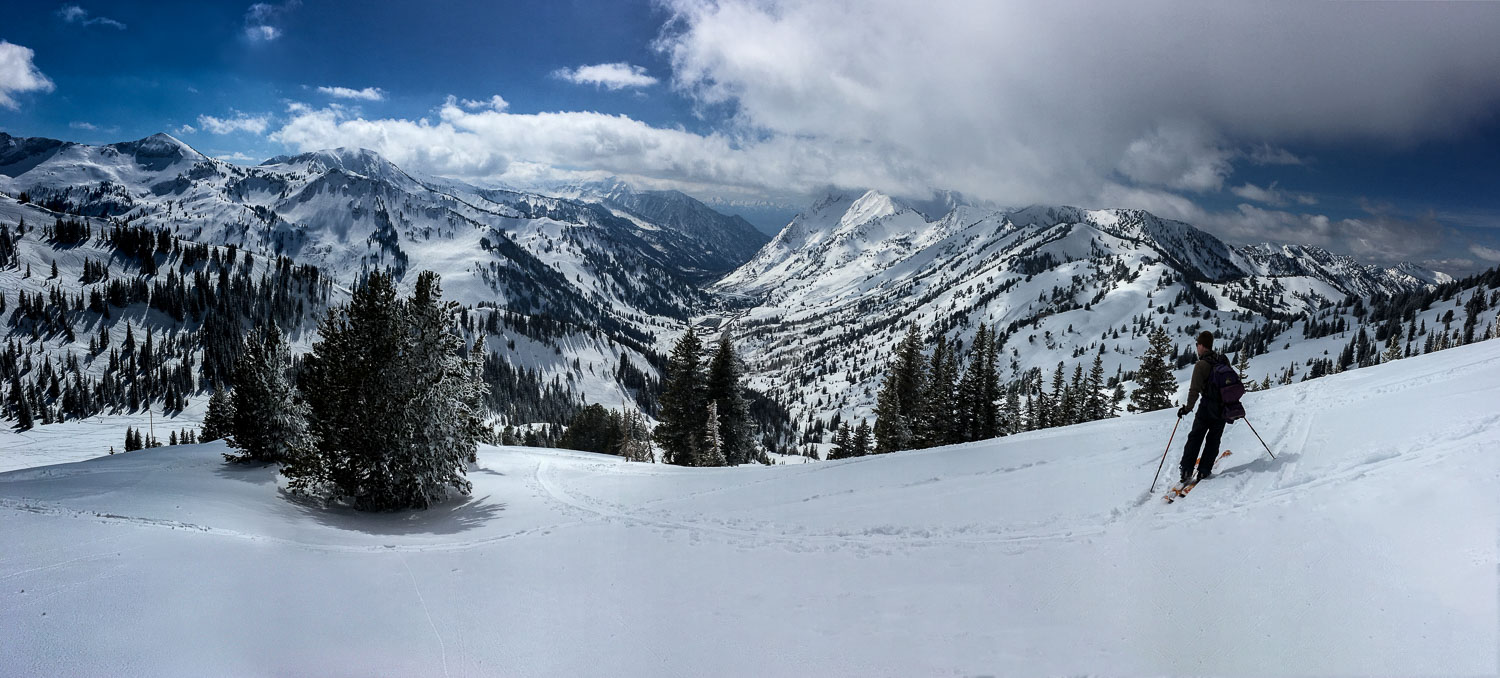
The Wasatch Backcountry Alliance (WBA) is a local SLC nonprofit representing the interests of thousands of backcountry – and resort – users both locally and nationally as they pertain to the preservation of the famous non-resort terrain in the Tri-Canyon area. We have paid very close attention to the LCC EIS transportation process, and this is our formal comment.
WBA agrees with UDOT that a preferred solution will represent a summary of key concerns expressed within the public comments that were received and processed: EQUITABLE PUBLIC ACCESS to dispersed recreation, OVERCROWDING, VISUAL IMPACTS, WATER QUALITY IMPACTS, AND YEAR-ROUND ACCESS for a majority of visitors. The proposed solution does not address these aspects – below is a list of issues that we see with UDOT choosing Gondola Alternative B as its preferred alternative:
Dispersed Use – UDOT claims to have “Consideration of all canyon users, not just resort visitors” but by only having resort terminals and not operating year-round it’s clear that this is disingenuous at best. It is well known that the White Pine trailhead is wildly popular year-round, with cars parking up and down the highway for up to a mile in either direction at all times of the year. This not only forces people to be far from their intended destination, it also creates a significant safety hazard along the state highway. The argument that UDOT uses for not stopping at White Pine is that there will be less traffic on the highway due to the gondola, thereby enabling White Pine users to drive to the lot is a red herring. WBA does not think that vehicle traffic will be abated enough (if at all) by the gondola to justify this conclusion. Backcountry users – like resort patrons – want to be able to use public transit in lieu of their own vehicles to access the canyon, but that is not possible under the current proposal.
Economic Benefit – The EIS states: “The [gondola] would provide an economic benefit to the ski resorts by allowing more users to access the resorts.” WBA does not feel that enriching two private entities is UDOT’s mission or responsibility and that applying taxpayer dollars to that end is a reckless use of public funds. Meanwhile, it should be noted that the latest Snowsports Industries of America participation numbers (2021-22) show a nearly 6% decrease in resort skiers and a 96% increase in backcountry skiers. Furthermore, data from the National Ski Area Association likewise indicates that participation in resort skiing has remained essentially flat for the last 30 years. More broadly accessible, dispersed activities such as backcountry skiing, snowboard touring, nordic skiing and snowshoeing on the other hand are among the fastest growing segments of the snowsports industry. And yet these increasingly popular activities, which should be made accessible to a majority of visitors to LCC, are fundamentally ignored by this proposal.
Expense – The initial cost proposed by UDOT for the gondola was $550M. This was pre-inflationary times, so even in the last year that figure will have risen to $600M, if not significantly higher (which WBA suspects to be the case). Even if the cost has only increased by $50M, that means that every single person in Utah is “paying” $200 each to have what is effectively the most expensive chairlift in history installed for the benefit of two businesses (and auxiliary businesses). Any benefit associated with the proposed gondola will likely never be realized by the many Utahns who don’t ski and/or live in other areas of the state, despite them paying for it.
Gondola Fees – Along with the rising costs of construction and UDOT’s admission that funds may not be available, the prospect of high costs for people to ride the gondola exists. There has been little discussion from UDOT or the ski resorts regarding fees for riding the gondola. It seems logical that high or even exorbitant fees to ride the gondola will drive ridership down.
Seasonality – As currently proposed, the gondola will only run from December through April. This is despite the fact that traffic in LCC between June and October is effectively at the same level as the winter, with Snowbird actually parking more cars for their Oktoberfest celebration than they do on winter powder days. Relegating the gondola to winter use only confirms that this is NOT a public transit option and is instead a wholly-taxpayer-funded chairlift to benefit two private ski areas.
Other Solutions – UDOT says “it may take years to secure federal, state and/or private funding for full implementation of Gondola B” but it also may NOT take years, so clearly the gondola is the priority. And if UDOT is trying to simultaneously raise at least $600M for the gondola AND fund the alternative solutions, the money is in danger of not being available for ANY solution. And by making it clear that the gondola is the preferred solution, UDOT is effectively being incentivized to make the alternate solutions NOT work. Therefore, we strongly suggest that UDOT acknowledge up front that the large tab for the gondola is unrealistic and focus its efforts on simpler, more easily attained transit solutions using existing infrastructure: tolling for all canyon users to disincentivize SOV’s, enhanced bus lanes, enhanced bus service (already being cut for the 22-23 season), alternating uphill/downhill flex lanes, etc. This would require UDOT working more closely with UTA, which appears to not be the case.
Phasing/Safety/Construction – The physical and operational elements of a gondola alternative render it useless unless the entire system is constructed. Recognizing UDOT typically does not develop a funding plan until the EIS is finalized – and that this project is so controversial – the EIS should be more specific on the intentions of UDOT in phasing specific elements of the selected alternative. As per Executive Summary, page S-25, Section S.11, there are no safety or operational benefits to construct part of the gondola. This section on phasing deserves additional clarity in order to adequately and transparently inform the decision. Delays on full funding of any length of time would render this entire NEPA process unreliable, and would require restarting the process anew.
Risk/Flexibility – UDOT’s consideration of a gondola as a transportation solution is highly innovative – and risky. While they may be confident in all of the analysis that went into evaluating its chance of success in meeting the Purpose and Need, there is little discussion in the DEIS for how a gondola system would be modified physically or operationally if that becomes necessary, or who would be in charge of making those determinations, and on what basis, and for what cost, and what the direct, indirect and cumulative impacts of those changes would be. This creates an inadequate basis for a decision to select the gondola alternative.
Controversial – By anyone’s assessment, this project has been “polarizing” in the community. A recent survey showed that 80% of respondents did not favor the gondola. The DEIS uses a softer characterization of “strong interest.” It is irresponsible to suggest it is anything other than controversial; for example, the mayors and councils of two of the biggest stakeholders – SLC and SLCO – have taken strong positions against the preferred alternative, instead saying that common sense solutions that use existing infrastructure and more buses should be pursued. All of the largest and most engaged environmental and dispersed recreational groups have said the same thing.
Parking Reservations/Tolling – Alta Ski Lifts parking fees this past winter and the effects on LCC traffic were a clear example of the impact that paid parking and tolling in the canyons could have on traffic reduction. This week UDOT again introduced the concept of tolling, but the complexity of the suggested program is confusing at best. Please consider simpler and more universal tolling at lower rates to generate better results.
Big Cottonwood Canyon – UDOT has inexplicably chosen to ignore BCC’s traffic situation despite a changing business environment that has made BCC just as popular as LCC and with similar traffic problems. Social trends indicate that user growth in the Tri-Canyon area will continue to demand solutions that are integrated across the entire area, and the pressures to connect the canyons and extend the gondola could result in a segmented expansion of those transportation systems – which is inconsistent with NEPA. A BCC/LCC connection is unacceptable to WBA and many other stakeholders who want to preserve the unique qualities of each canyon and avoid the prospect of lifts criss-crossing the ridgetops.
Verification – UDOT has not provided examples or proof that adding a gondola will actually reduce traffic in LCC. With continued full vehicle access on the state highway it is just as likely that visitors will continue to drive their vehicles up the canyon for maximum efficiency as some will take the gondola. There is a lack of acknowledgement by UDOT that “powder fever” and the overarching enthusiasm for skiing/riding tends to have the psychological effect of users demanding maximum transit efficiency, which the gondola does not represent.
Avalanche Mitigation – The use of howitzers to control avalanches is projected to continue into the future. The gondola will not run while avalanche control work is happening and once anti-personnel shells are launched over the gondola, it must be cleared before it can start up again. In fact, there may be even more downtime than simply opening the road when – as is most common – the avalanches do not reach the road. UDOT does not state how long it will take to unload cars, inspect cables and towers, and reload cars during routine avalanche control which is something we must know before accepting the findings of the EIS.
Effects on climbing – While WBA primarily represents the interests of wintertime non-motorized use, many WBA members are also climbers. We are deeply concerned about the effect the construction and operation of the gondola will have on the world class climbing in LCC. Climbing has a long history in the canyon, is a very popular activity, and it’s representative group Salt Lake City Climbers Alliance has a long history of engaging with the state and the LDS church to protect and enhance the LCC climbing areas, yet the EIS effectively ignored the impact on climbing in its Preferred Solution.
Viewshed – While we acknowledge that the top of LCC harbors a small town and two ski resorts and related businesses, the heart of LCC is wild terrain that includes clearly visible tracts of designated wilderness. The effect of 200-foot tall towers and 35-person gondola cars will be an eyesore that a majority of constituents, to whom such infrastructure will be visible whether they are driving, hiking, climbing, or skiing, will find offensive. Gondola infrastructure will be visible to anyone skiing, hiking, or otherwise recreating in the south or north facing terrain of LCC, as well as simply doing a leisurely drive up the canyon. There are clearly better, more logical common sense solutions that can be put in place that do not create such an eyesore in this unique environment.
Thank you for your efforts on this process and for your consideration of this comment.
Sincerely,
The Board of Directors of Wasatch Backcountry Alliance
(Photo courtesy of Howie Garber Photography)
Join the WBA newsletter for Central Wasatch backcountry events and news.
More articles
-
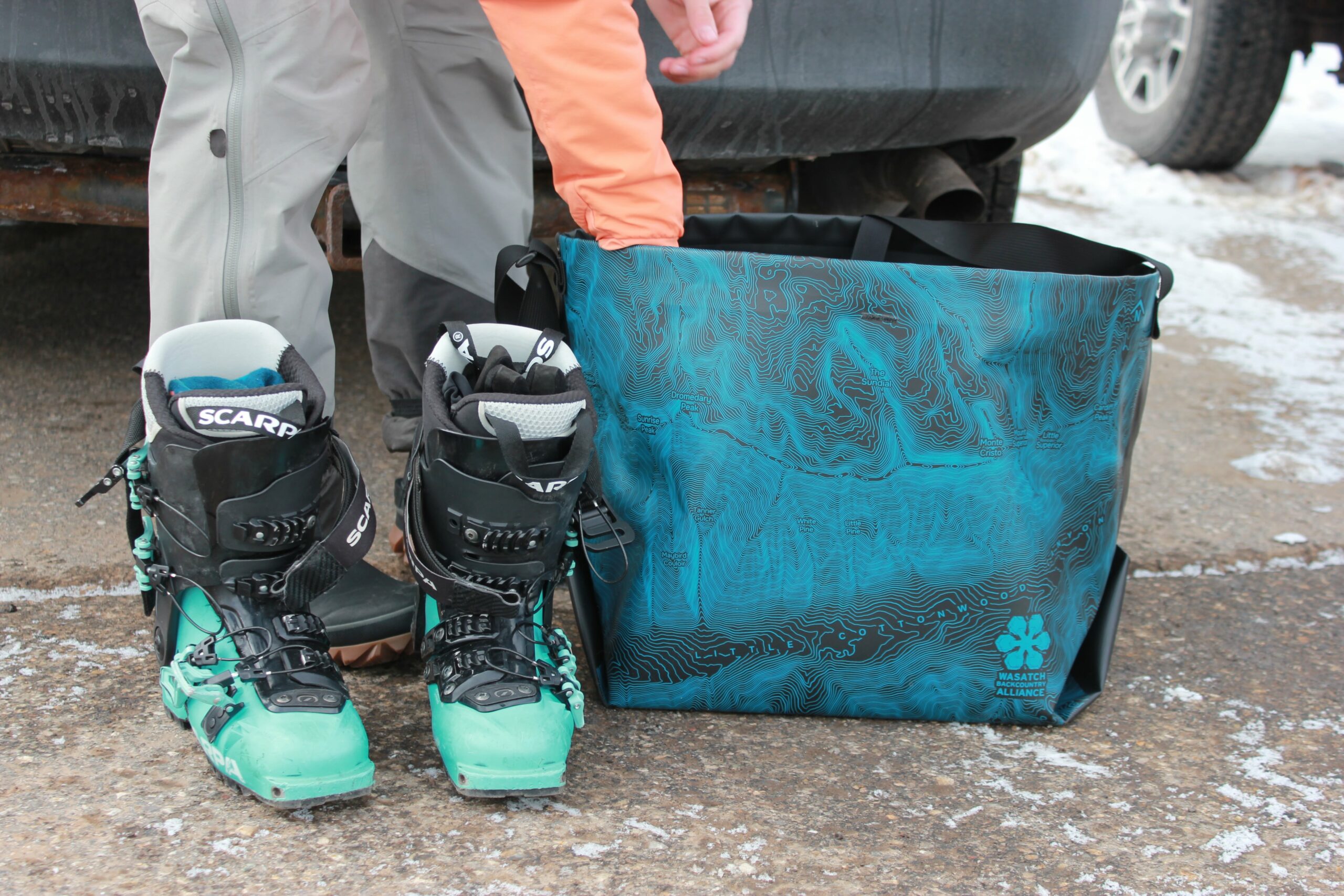
WBA x eqpd GearBuckets
We are stoked to introduce the eqpd gear Wasatch Backcountry Alliance GearBucket! Stamped with the Little Cottonwood Canyon topo map, the GearBucket combines the usefulness…
-
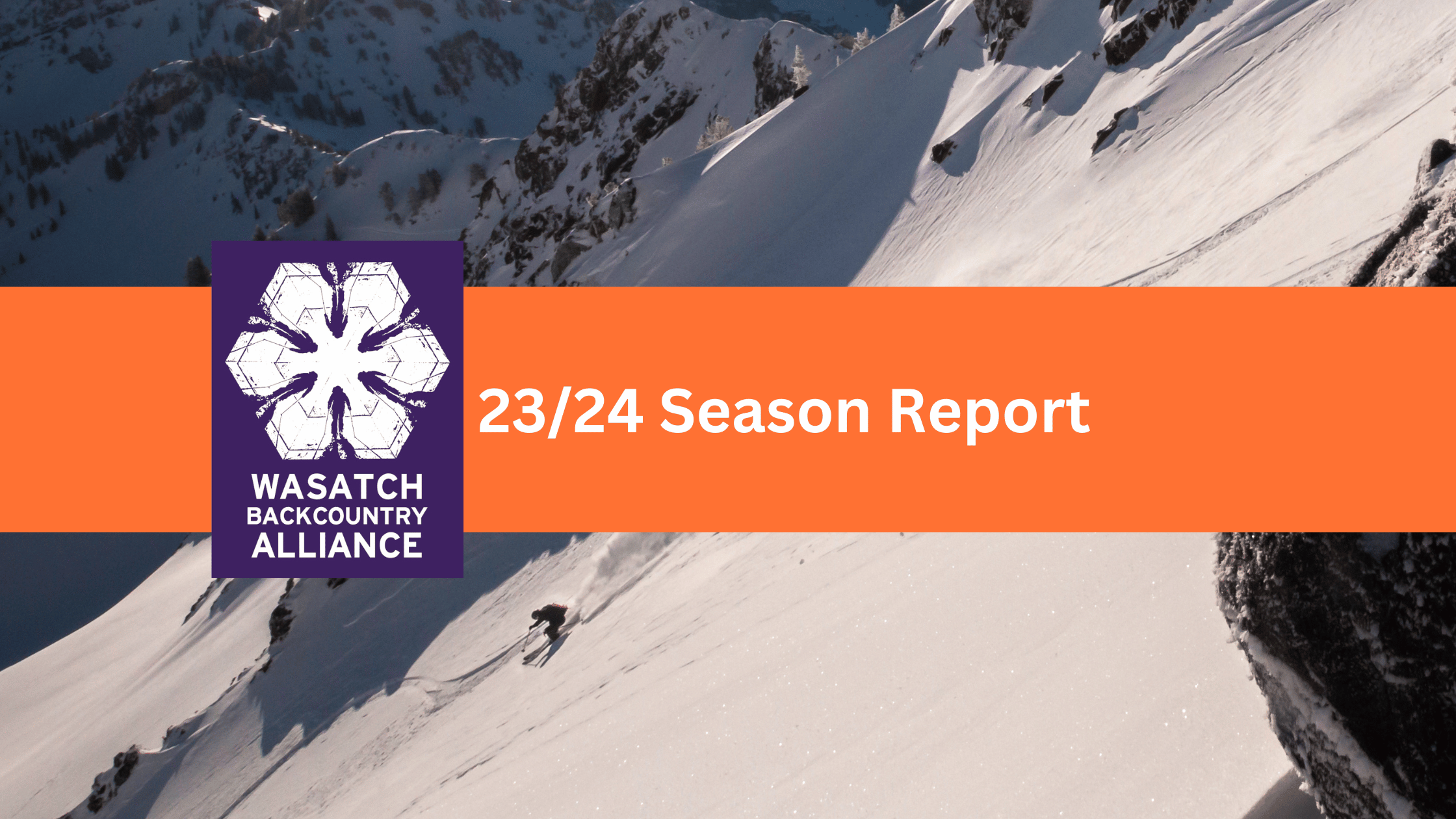
23/24 Season Report
Wasatch Backcountry Alliance published our first-ever season report from the 23/24 winter! For the past 10 years, WBA has been run by a volunteer board…
-
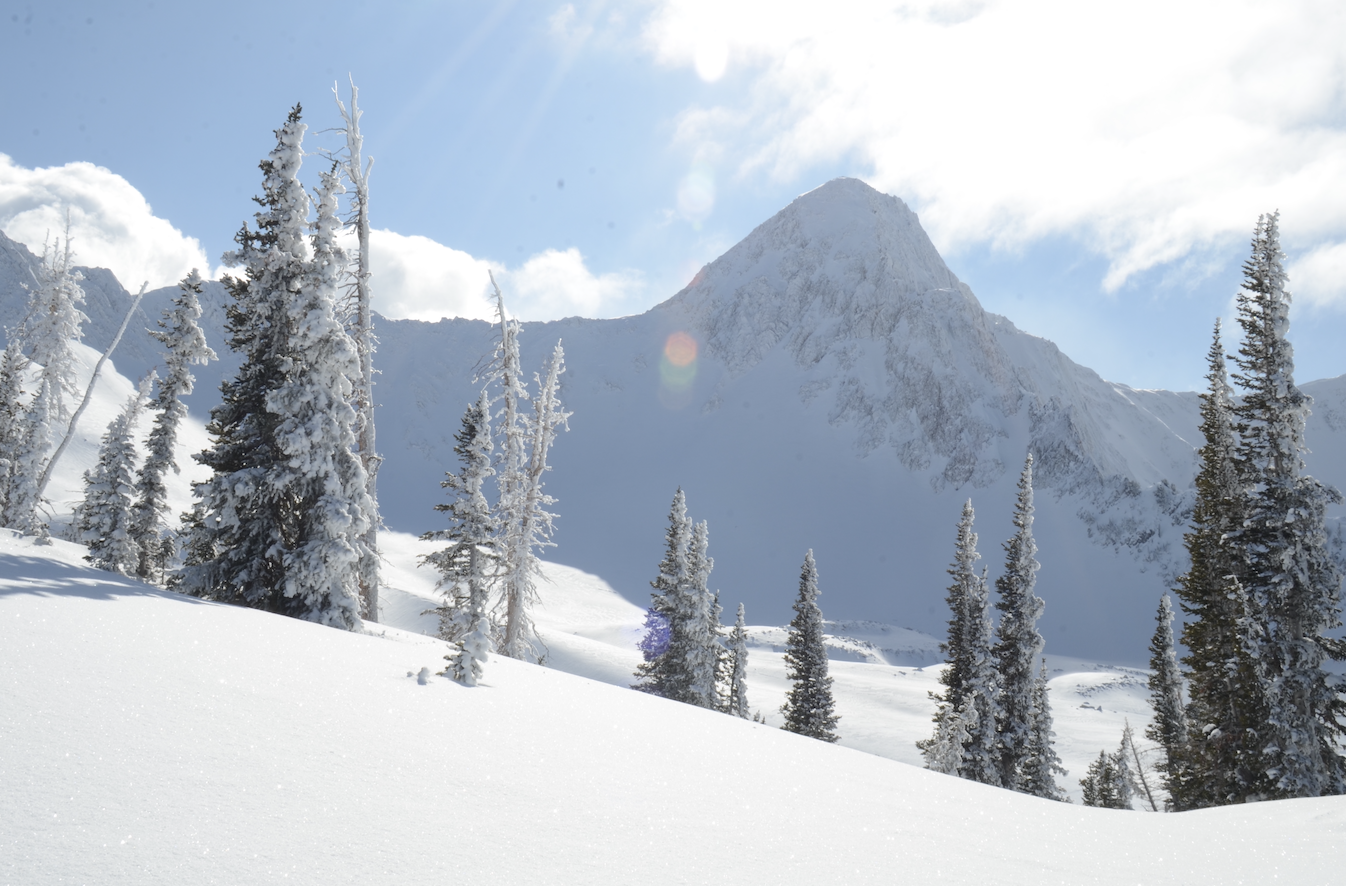
Cheers to the Wasatch!
Let’s make a lasting impact together! A note from our Director, Dani Poirier Like many of you, the Wasatch is where I learned to backcountry…
-
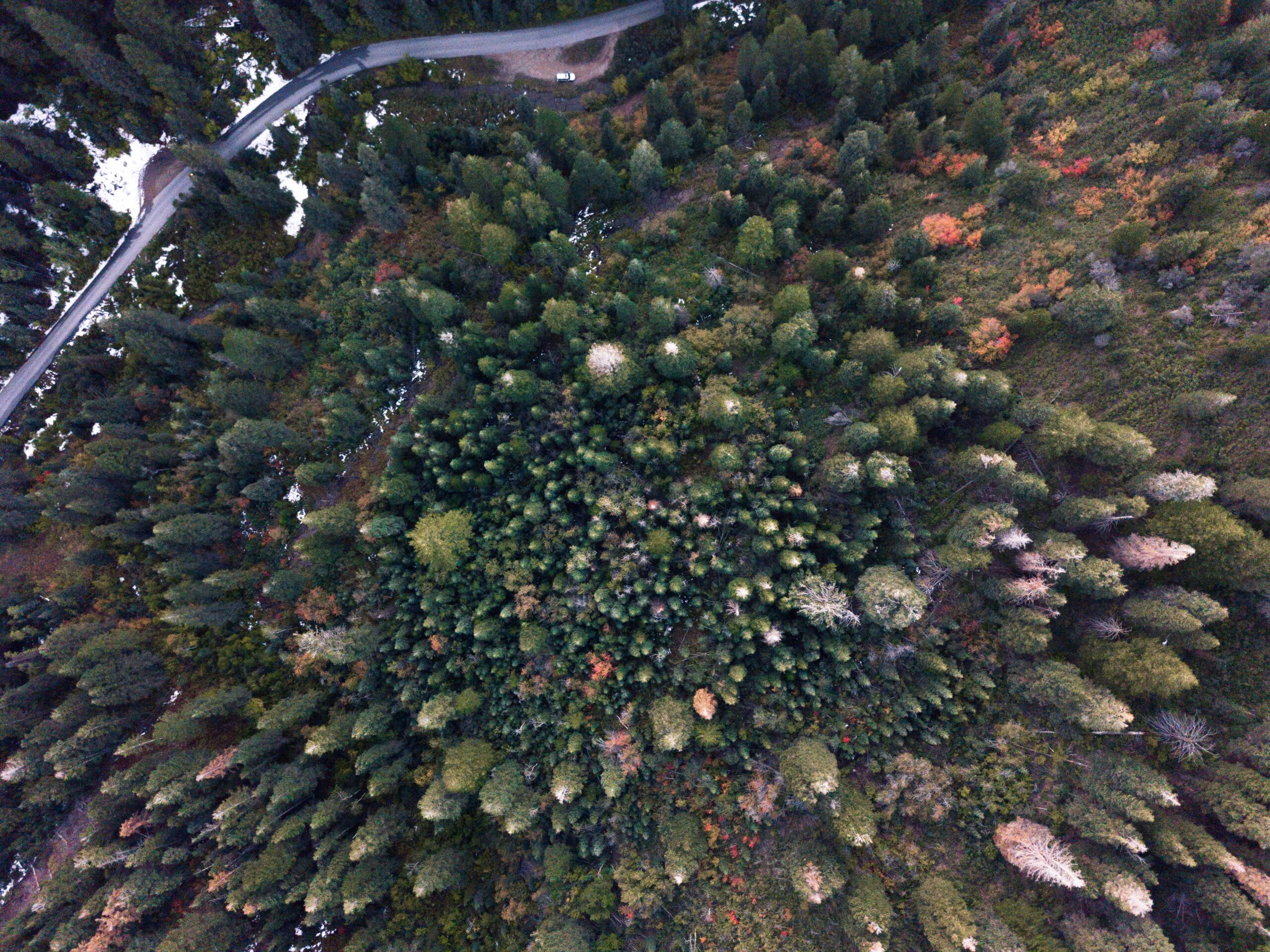
UPDATED- Comment Period: Upper Mill Creek Canyon
03/29/2024 Update You may remember that the Forest Service, Salt Lake County, and Federal Highways have been working on a plan to rebuild the Mill…